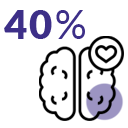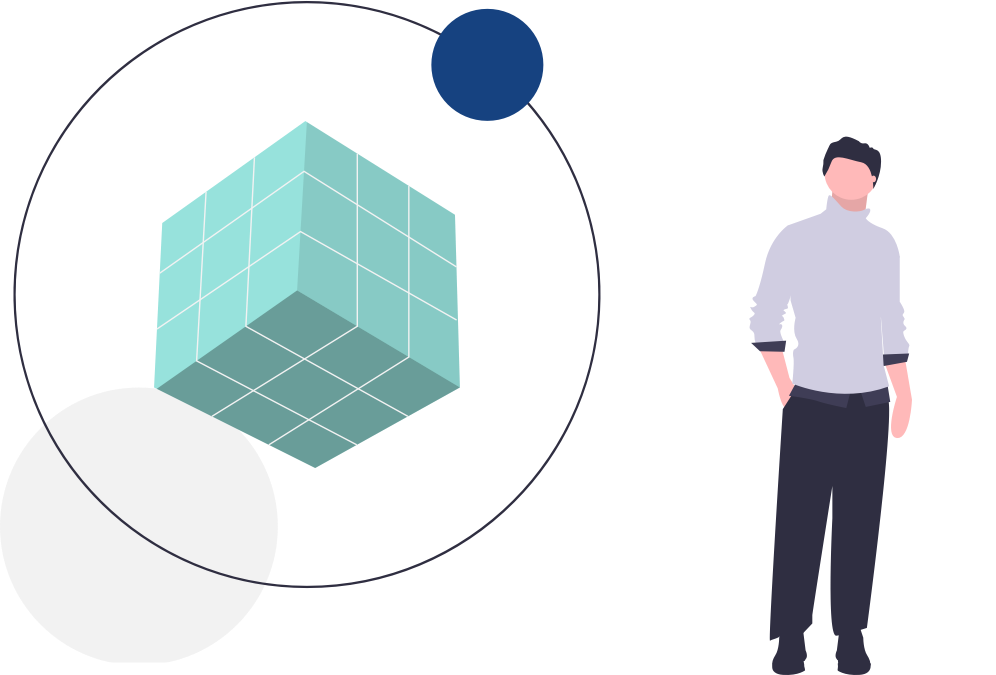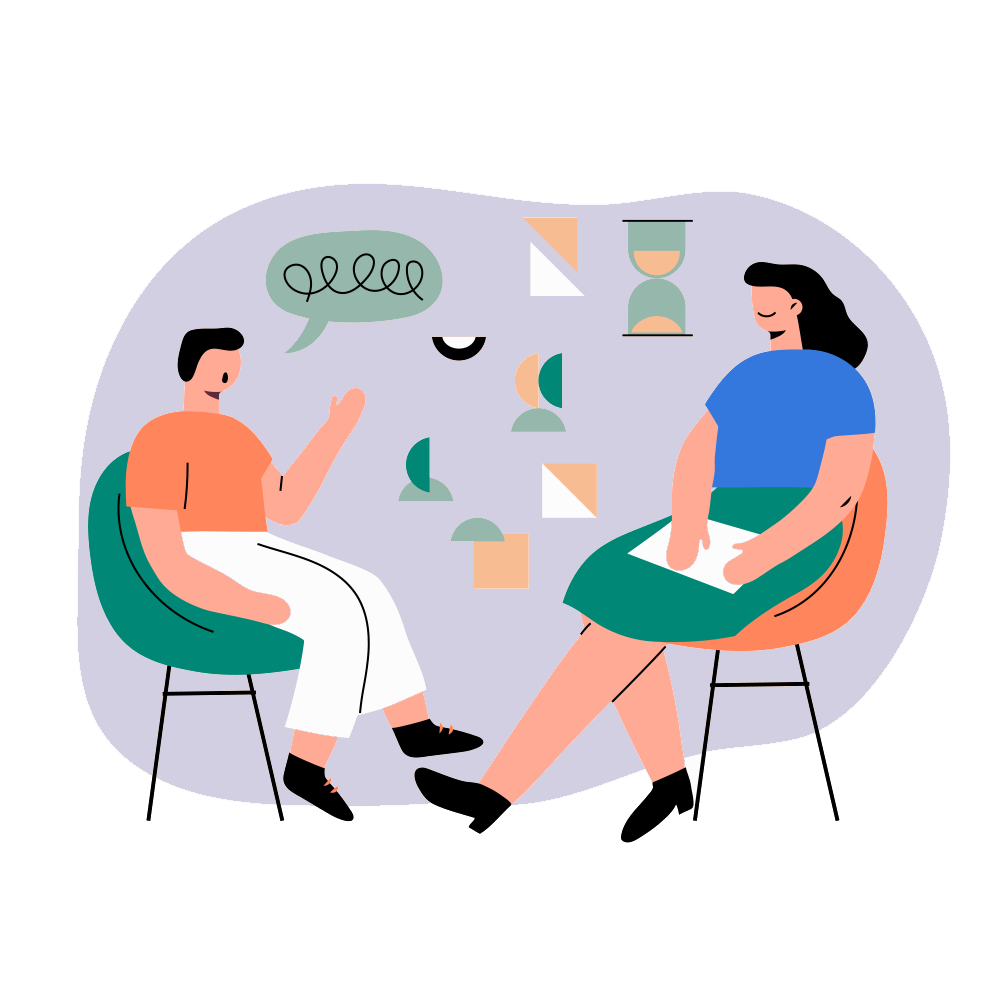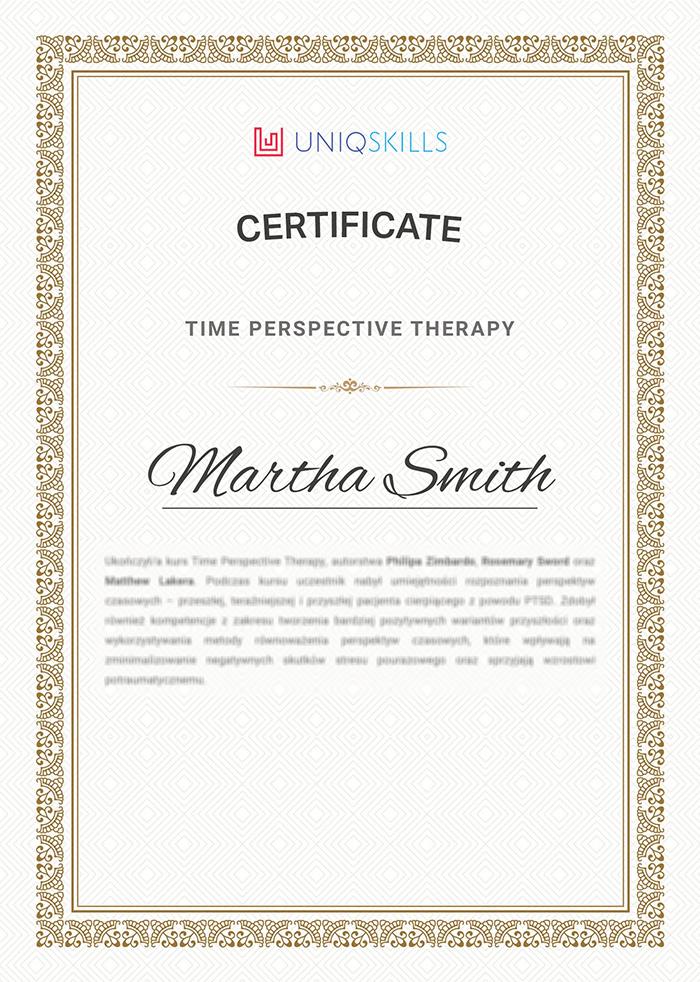
Do you know how to realistically work with clients who experience trauma, anxiety, mental crisis?
The Time Perspective Therapy method is presented step by step by prof. Philip Zimbardo and Rosemary Sword. Based on Rosemary Sword's experience in therapeutic work with war veterans and their families, you will learn how to incorporate the Time Perspective Therapy method into your practice to conduct effective therapy of people affected by the experience of trauma, anxiety, and mental crisis.
An effective method of treating trauma
Join the participants of the course that adequately responds to the needs of our times, when many clients of the clinics face the challenge of finding themselves in a changing reality: PTSD, depression, anxiety disorders, personality and mood disorders.
The latest mental health reports for children and adults indicate that:

About 40 percent of society believe that their mental health deteriorated during the pandemic.

The symptoms most frequently reported by respondents include: chronic stress, bad mood, sleep disorders, movement disorders and lack of energy.

As much as 68 percent of the respondents emphasized that two years ago they did not have such problems.
Take part in the course and introduce Time‑Balancing Therapy into your therapeutic practice.
During the course you will learn, among others:

How to..
.. use the Zimbardo Time Perspective Inventory diagnostic tool developed by prof. Philip Zimbardo and how, based on the client's feelings and thoughts related to the past, present and future, identify trauma, anxiety and bond disorders?

How to..
.. quickly and effectively help clients experiencing mental suffering find harmony, peace and satisfaction in life?

How to..
.. put into practice the key elements of the Balancing Time Perspectives method to maximize the positive effects of therapy?
Course authors:

Philip Zimbardo
Retired Stanford University professor, psychologist, co-creator of the Time Perspective Theory, TPT therapeutic method and Zimbardo Time Perspective Inventory diagnostic tool, former president of the American Psychological Association.

Rosemary Sword
Psychotherapist, co-creator of the TPT therapeutic method. Co-author of the publication "Power of time", showing a breakthrough approach in PTSD therapy of war veterans.
Part of the course
See an excerpt from the online lecture by prof. Philip Zimbardo.
In the fight against trauma and anxiety.

Hard times
In early 2020, with the emergence of the new coronavirus mutation, many people came to struggle with hitherto unknown difficult feelings, including a sense of insecurity, anxiety, fear - which relatively often resulted in the development of mental disorders. Next tragic news came from Ukraine. When the war broke out in Ukraine, it resulted in a significant increase in emotional problems, the severity of anxiety, and sometimes the occurrence of secondary trauma. Unfortunately, the number of clients who had already reported to therapy offices due to past traumas and chronic stress did not decrease.

Effectiveness
The Time Perspective Therapy is one of the most effective methods of treating traumas, anxiety disorders and bond disorders, and also supports people suffering from mourning and separation from loved ones. It enables changing the way of thinking about our story and so helps to shape a better future and improve the quality of life. Especially now, when many clients are facing the challenge of finding oneself in a new reality, it can be a unique and valuable method for psychologists, crisis interveners and psychotherapists.
What will you gain by taking part in the course?

New, current threads
During 2 hours of lectures you will learn specific guidelines for working with a client who has experienced war, trauma, chronic stress, anxiety or illness, in the form of recommendations and indications for therapy guidance.

Workshop
You will learn to plan a therapeutic intervention tailored to individual cases. You will equip yourself with the guidance of world-class specialists and creators of the therapeutic trend of TPT.

Practice
You will get to know case studies where specific working methods have been analyzed that you will apply in your own practice. You will receive a specialized diagnostic tool, developed by Professor Philip Zimbardo along with comments and tips for use in working with the client.

Availability
You will have access to all materials in a convenient form online around the clock, 7 days a week, so you can learn where, how and when you want.
You will get ready materials and scenarios for conducting individual stages and sessions prepared by world-class experts and creators of the TPT method.

Certification
After completing the course, you will receive a personal document confirming participation in the course.
A certificate will be available in your panel on the UniqSkills platform.
Syllabus:
|
Module 1 - Indications for the use of the method |
|---|
|
1.1 TPT - goal-oriented behavioural-cognitive therapy in balancing space time perspectives in civilization and social threats of the 21st century and other challenges. |
|
1.2 How does the brain work in trauma? What are the key moments in the emotional suffering cycle? |
|
1.3 Patterns and mechanisms of coping with stress by people who experienced the events of high stress levels. |
|
1.4 Terms used in TPT. How language meanings are formulated in order to initiate a change? |
|
1.5 Developing a sustainable perspective of time. Six perspectives on the perception of time and their relationship with the personality, experience of the individual and emotional responses. |
|
1.6 How to achieve a sustainable time perspective? |
|
Module 2 - Case studies |
|---|
|
2.1 Assessment of the client's predisposition and readiness to change the way they think about "their story" and to change maladaptive behaviours. Beliefs that influence the course of the process of change. |
|
2.2 "Trapped in time" - opportunities and threats of using certain linguistic meanings. |
|
2.3 Why do people with stress trauma live in a fatalistic present? - case study of Keiko. |
|
2.4 Variants of the future as a new dimension of the purpose and meaning of life for people after trauma - personal description from Time Perspective Therapy’s Rosemary Sword in the case of PTSD. |
|
Module 3 - Using the method in working with clients who have experienced war trauma. |
|---|
|
3.1 How the war in Ukraine affected the sense of security and the mental condition of individuals? - Analysis of psychological difficulties and symptoms occurring as a consequence of dramatic events beyond the eastern border of Poland. |
|
3.2 How did Russian military aggression modify the general population's vision of the world? - What information is worth paying attention to when identifying present-day fatalism and a negative future and how to support the client in regaining faith in a better tomorrow? |
|
3.3 How to recognize the symptoms of secondary trauma in a client overwhelmed by negative information - practical tips for the first meetings with a client experiencing severe stress, anxiety and despair over the war. |
|
3.4 How to use time perspectives to quickly and effectively help a person who experienced a personal war drama? - stages of therapeutic work |
|
3.5 What effects can be achieved by changing the time perspectives of people most affected by the war in Ukraine? - replacing fear for the future with a positive plan and fatalism with the ability to enjoy life. |
How do customers rate the course?
Order this course
THIS ADVANCED ONLINE COURSE INCLUDES:
Time Perspective Therapy
- 24/7 access to a modern platform
- Expert Trainer
- Access on mobile and tablets
- Hours of on-demand videos
- Certificate of completion
Are you interested in making a purchase? Leave us youremail address, and we'll get back to you with anoffer!
Course Quality Guarantee ✔